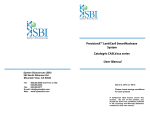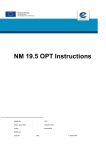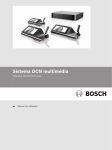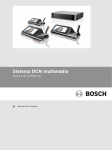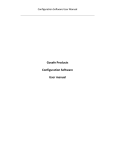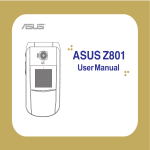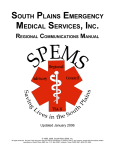Download Landing times - Auckland Airport
Transcript
Landing times The alerts act as indication for the Auckland CDM Partners of when a specific flight is nearing Auckland Airport. This is updates via Airways Corporation New Zealand Arrivals Manager feeds and is accurate to within +/- 2 minutes. Figure 4.1 EDLT/ADLT First Alert Final alert Domestic ‐20 ‐10 International ‐20 ‐10 Manual Input required Nil‐Automatic feed from ACNZ Nil‐Automatic feed from ACNZ Result Advises all partners of the most accurate time that the aircraft will land at NZAA. The 10‐minute alarm is a trigger to remind ground handlers that they should be at the stand. The process for this is for all Partners to be aware. The alert is an awareness tool to promote planning for the handler to be at the stand at -10, the Airline to be aware that there flight is nearing and for Airways and AIAL to be able to better plan movements. Once the Aircraft has landed the ELDT will become an ALDT. The variable taxi time will then be added to the ALDT and will result in a calculated time for the EIBT. If the EIBT is not met and over runs the time will continue to roll and then alert until the EIBT becomes an AIBT when the Aircraft is considered “in blocks”. No cheat sheet is required for this alert as it is an alert only that does not require interaction. 13 Commencement of Ground Handling For an aircraft that arrives at Auckland Airport and then tows to a layover for a long period. The ground handler will need to confirm when the ground handling commences after the tow back to the departure stand. The portal will alert as per below in figure 4.2. Figure 4.2 ECGT/ACGT First Alert Final alert Manual Input required Domestic ‐10 ‐5 Ground handler Internationall ‐20 ‐10 Ground handler Result Ground handling commences and the calculations in the portal can estimate the EOBT. The handler will need to update the TOBT when required as per the TOBT process. The process at Auckland is for the Ground handler to confirm the ECGT as an ACGT in order to start the turnaround process on the portal. This then takes the given parameters into account and performs calculations to provide an EOBT. The handler will be required to update the ECGT when the aircraft has been towed back onto the departure stand or, in the case of an early tow back, when the turn process begins to prepare for the departure process. The consequence of not confirming an ACGT will mean that calculations will not perform in order to provide an accurate EOBT. If this function is missed the alerts for a TOBT to be entered will also be inaccurate and possibly missed resulting in incorrect measures being shared. Refer to the 20/20 collaborative decision making user manual for cheat sheet on how to confirm an ACGT. 14 Boarding times Boarding times will alert in the portal when they meet the parameters that ground handlers have provided. These parameters are specific for the flight service type and are detailed in figure 4.3. Figure 4.3 ESBT,EEBT, AOBT First Alert (minutes) ESBT Air NZ Dom Supplied Parameter Air NZ Int Supplied Parameter Aerocare Int Supplied Parameter Aerocare Dom Supplied Parameter Menzies Supplied Parameter Final alert (minutes) EEBT Supplied Parameter Supplied Parameter Supplied Parameter Supplied Parameter Supplied Parameter Manual Input required Result Boarding agent Boarding agent Boarding agent Boarding agent Boarding agent All Partners are aware when boarding commences and completes. Indicating that the flight is reaching the end of the turnaround phase. The Boarding agent confirms the ASBT and then the AEBT when boarding starts and ends. This function can be carried out in the gate lounge on same screen that igate is displayed on. The CDM portal will be displayed on a separate tab and reached through the appropriate log in. The consequence of not actioning the ASBT and AEBT will be the lack of shared information. The portal has been set up so that if a TOBT has been set the portal will not calculate a new TOBT if the ASBT or AEBT is missed. This gives the priority to the TOBT. The ASBT and AEBT are still considered important functions and will add to the overall efficiency of the Airport through providing visibility of the process. Refer to the 20/20 collaborative decision making user manual for cheat sheet on how to confirm or update an ESBT and EEBT to an ASBT or AEBT. 15 Off Blocks For stage one a high priority is placed upon the ground handler ensuring that an up to date and accurate TOBT is given. The alarms set around the TOBT are indicated below in figure 4.4. Figure 4.4 EOBT/ TOBT First Alert Final alert Domestic ‐20 ‐10 International ‐20 ‐12 Manual Input required Ground handler Ground handler Result Confirms or updates the EOBT as a TOBT. This is to remain accurate to within +/‐ 5 minutes and is a vital part of stage 1 When the orange alert appears the handler should be thinking about a TOBT and weather it will be the same as the EOBT or weather an update is required. The red alert at -10/-12 indicates that the TOBT should have been entered. If the TOBT is the same as the EOBT then it should be confirmed so that a TOBT shows in the portal. If the EOBT is not correct then the EOBT should be updated to a more accurate time and then confirmed as a TOBT. The accuracy of the TOBT needs to be +/- 5minutes of the AOBT. There is no limit to the number of times that a TOBT can be updated. For instance if a TOBT is entered but then a technical fault occurs and the aircraft needs another 10minutes on the stand then the TOBT should be updated again. At all time when a TOBT is set it should be within +/- minutes of the best known time that the aircraft is expected to call for pushback. The consequence of not updating the TOBT to within +/- 5 minutes will have an adverse effect on the success measures that Airport CDM aims to meet. The TOBT is a crucial part of Airport CDM. Sharing accurate TOBTs will help to create better planning around, OTP, arrival congestion, departure congestion, airfield use and airspace planning. Refer to the 20/20 collaborative decision making user manual for cheat sheet on how to confirm or update a TOBT. 16 Missing Flight Plan When a flight plan is not matched in the CDM portal an alert will show by highlighting the flight number. The initial alert is yellow, the next alert is orange and the most severe alert is red. Figure 4.5 Missing Flight Plan Domestic International -3 hrs Second alert ‐2 hrs -3 hrs ‐2 hrs First Alert -1 hr Manual Input required Ground Handler -1hr Ground Handler Final alert Result Matched flights and correct information sharing The process at Auckland is for the handler to match the missing flight plan with the correct flight plan before the alert reaches the red level of severity. The consequence of not matching a flight plan is that no calculations can be performed by the CDM portal automatically and only manual inputs will register. Also, no updates will be received by Airways for the flight so the accuracy can be severely degraded and incorrect having an adverse effect on the Airport CDM aim. Refer to the 20/20 collaborative decision making user manual for cheat sheet on how to match a missing flight plan 17 FIDs discrepancy alert What is displayed on the CDM portal can differ from what is displayed on the public Flight Information Display. This decision was made by the partners due to accuracy that is required in the portal and the requirement that may be needed to not necessarily update the public with the same delay message. By separating the two we can ensure that all updates are delivered to the CDM portal weather the public need to be aware or not. There is an alert to the user to indicate that the CDM displayed TOBT differs more than 15 minutes from what the public FIDs display. Refer figure 4.6. Figure 4.6 Missing Flight Plan Domestic Internation al Alert +/- 15 minutes difference between FIDS and TOBT/EOBT +/- 15 minutes difference between FIDS and TOBT/EOBT Manual Input required Nil Nil Result Awareness of a discrepancy between the two inputs The discrepancy alert will display on the FIDs column in ground handler view. This alert will not display on the Apron Tower view as that view does not have the FIDs column. The process around a discrepancy becomes internal for the airline and handler. The main focus for Airport CDM is that the TOBT remains accurate no matter whether there is a discrepancy between the FIDs time and the TOBT. No cheat sheet is required for this alert as it is an alert only that does not require interaction. 18 Appendix 1.1 CDM (Collaborative Decision Making) at Auckland Airport GROUND HANDLER INFORMATION SHEET FAQ What is CDM? CDM stands for Collaborative Decision Making. The key aim of CDM is to facilitate the sharing of operational data to allow better informed decisions to be made. Why The principle of CDM is to optimise the turnaround process in order to ensure the best coordination of resources and the best use of airport infrastructure. What benefits will we expect to see? Reduction in taxi times Reduced engine running Improved passenger experience Reduced Carbon footprint Greater visibility Better use of ground resources Better use of stands Better use of Airspace Improved recovery from disruption Reduced fuel burn How will CDM be rolled out? CDM will be rolled out at Auckland Airport in a staged approach. Stage one will largely be concentrated on the ground handler updating what is known as a TOBT (Targeted off block time). This is then shared to the other CDM partners in order to create better visibility. What is the TOBT and how does it work? TOBT- Targeted off blocks time is a more up to date and accurate EOBT (Estimated off blocks time). The CDM portal that the ground handlers will use will alert the handler that a TOBT needs to be confirmed or updated at -20. This will alert again at -10 minutes. This alert advises the handler that the EOBT needs to be confirmed as correct, or amended, this will then become the TOBT. The accuracy required initially for the TOBT is +/- 5 minutes. What is required from the Ground handlers? The Ground handler will have the function of either confirming or updating the TOBT and ensuring that it is kept accurate to within +/- 5 minutes. The Gate agent will confirm from the gate lounge when boarding begins and ends by selecting the appropriate start/ end boarding tile. Update the TOBT if information is received from the flight crews or other Operators advising that the TOBT cannot be met. This could be for any reason, i.e., training, crew issues, tech issues, loading, catering, boarding, fuelling or other factors. It’s important that this message gets entered so that all partners can have visibility. Inaccurate TOBTs will adversely affect the benefits that CDM aims to provide. ‐20 ‐10 First alert for TOBT confirmation to handler Second alert for TOBT confirmation to Handler EOBT updated as TOBT by the handler and MUST be accurate to within +/‐ 5 minutes ALL INFORMATION THAT WILL AFFECT THE TOBT IS TO BE ENTERED BY GROUND HANDLER. 21 Appe endix 1.2 2 CDM M (Collaboratiive Dec cision Making) M ) at Au uckland Airportt -Pilo ot intera actionFAQ What is CDM? CDM stan nds for Collaborative Decision Making. Th he key aim of CDM is to fac cilitate the shaaring of operational data to allow bettter informed decisions d to be e made. Why The princciple of CDM iss to optimise the t turnaround d process in order to ensure e the best cooordination of re esources and the best u use of airport infrastructure. i What be enefits will we w expect to o see? Redu uction in taxi times Reduced engine running Imp proved passsenger expe erience Reduced Carbon footprint G Greater vissibility Bette er use of grround reso ources Better use e of stands Bette er use of Airsspace Improved m recovery from disruption Reeduced fueel burn How willl CDM be ro olled out? CDM will be rolled out at Auckland Airport A in a stag h. Stage one will w largely be cconcentrated on o the ged approach andler updatin ng what is kno own as a TOBT T (Targeted off block time). This is then sshared to the other o CDM ground ha partners iin order to cre eate better visibility. Stage 1 o of CDM will go o live in March 2015. What is the TOBT and a how doe es it work? TOBT- Ta argeted off blo ocks time is a more up to da ate and accura ate EOBT (Estimated off bloocks time). The CDM portal that the g ground handlers will use will alert the hand dler that a TO OBT need to be e confirmed orr updated at -2 20. This will alert again at -10 minuttes. This alert advises the H Handler that th he EOBT need ds to be confirrmed as correc ct, or amended d, this will then n become the TOBT. T The acccuracy requirred initially for the TOBT is + +/- 5 minutes. om the fligh ht crew? What is required fro All that w we are asking g of the flight crew is that y you advise your y handler in i advance w with any change, expected d overrun o or potential impact i to the TOBT so tha at they can up pdate the TOB BT in the CDM M Portal. Provide in nformation to the t handler if the TOBT willl not be met. This T could be for f any reasonn, i.e., training g, crew issues or other rreasons. It’s im mportant that this t message g gets through so s that all parttners can havee visibility. Ina accurate TOBTs w will adversely affect a the bene efits that CDM M aims to provide ‐20 ffirst alarm forr TOBT cconfirmation to ground handler ‐10 secoond alarm forr TOBT connfirmation to o grounnd handler EOBT updatted as TOBT by the haandler and MUST be aaccurate to within +/‐ 5 minutes A ALL INFORMATION THAT WILL AFF ECT THE TO OBT IS TO BE B ENTERED D BY D HANDLER R. GROUND 22 2 The image part with relationship ID rId25 was not found in the file. For further information on Auckland Airport CDM please refer to the below url www.aucklandairport.co.nz/cdm 23













